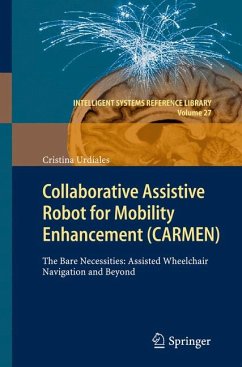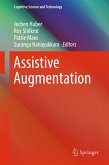This book presents the collaborative control paradigm. User performance may be indicative of physical/cognitive condition, so it is used to decide how much help is needed. Besides, collaborative control integrates machine and user commands so that people contribute to self-motion at all times.
Collaborative control was extensively tested for 3 years using a robotized wheelchair at a rehabilitation hospital in Rome with volunteer inpatients presenting different disabilities, ranging from mild to severe. We also present a taxonomy of common metrics for wheelchair navigation and tests are evaluated accordingly. Obtained results are coherent both from a quantitative and qualitative point of view.
Dieser Download kann aus rechtlichen Gründen nur mit Rechnungsadresse in A, B, BG, CY, CZ, D, DK, EW, E, FIN, F, GR, HR, H, IRL, I, LT, L, LR, M, NL, PL, P, R, S, SLO, SK ausgeliefert werden.









